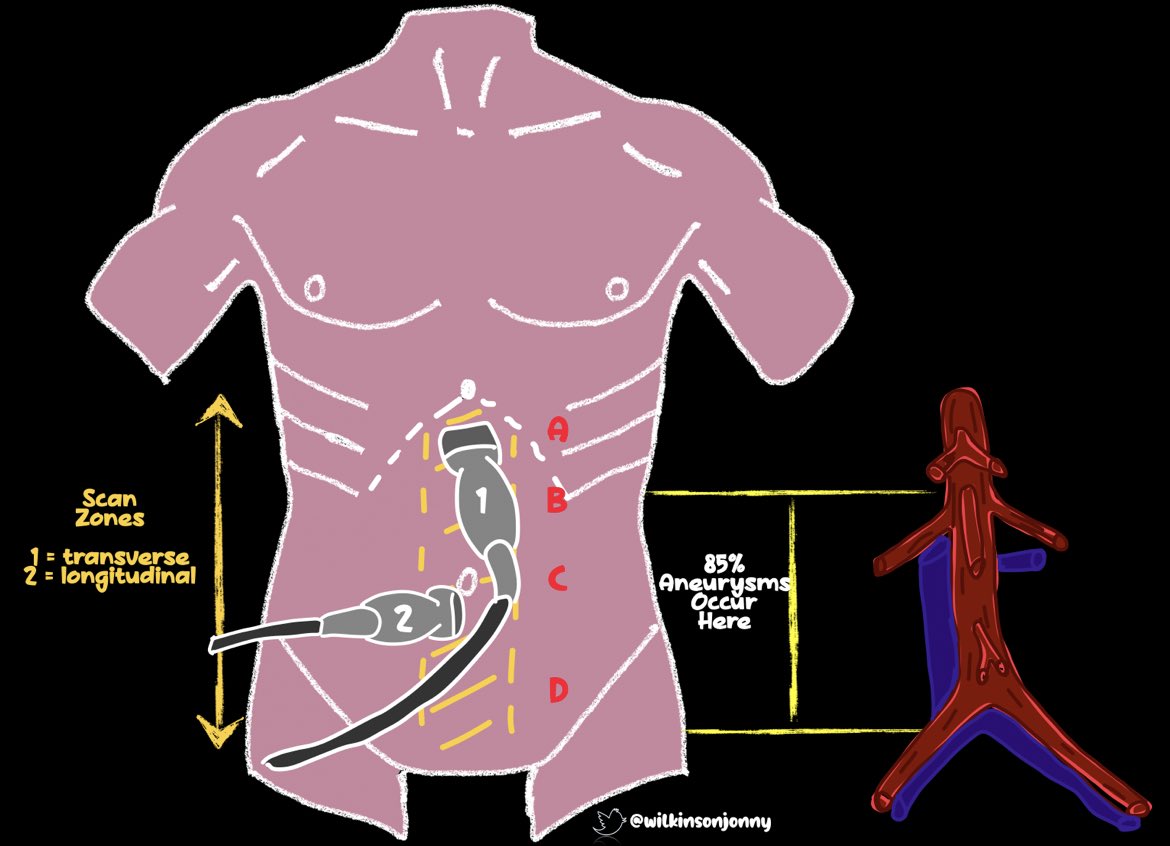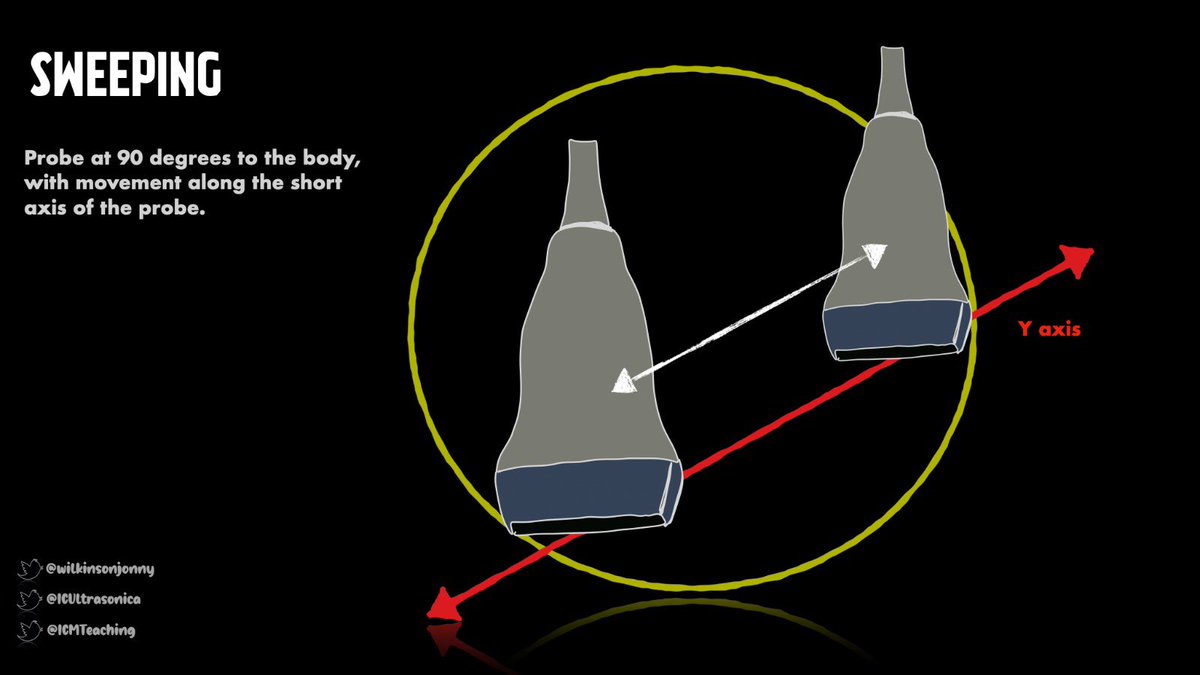
1/13
Today’s Tweetorial for you!
We look at basic cardiac #POCUS views👍 🫀
First; the Parasternal Long Axis (PLAX)
#FOAMed #FOAMcc #echofirst
Probe position shown with marker to right shoulder, left Parasternal edge; roughly at intercostal spaces 2-3/3-4🤷♂️
Today’s Tweetorial for you!
We look at basic cardiac #POCUS views👍 🫀
First; the Parasternal Long Axis (PLAX)
#FOAMed #FOAMcc #echofirst
Probe position shown with marker to right shoulder, left Parasternal edge; roughly at intercostal spaces 2-3/3-4🤷♂️
2/13
What should you see on ultrasound, and the associated sono anatomy🤔
BTW, this is the only basic position you need for this. Dipping the tail or lifting the tail then get you inflow and outflow views. This is more advanced. #FUSIC
What should you see on ultrasound, and the associated sono anatomy🤔
BTW, this is the only basic position you need for this. Dipping the tail or lifting the tail then get you inflow and outflow views. This is more advanced. #FUSIC
3/13
Next, the Parasternal short axis (PSAX) - Mitral view
If you’ve lined up the aortic and mitral valves in the centre of the image on PLAX, a simple rotation of the probe through 90 degrees gives you your view🤛👍
Next, the Parasternal short axis (PSAX) - Mitral view
If you’ve lined up the aortic and mitral valves in the centre of the image on PLAX, a simple rotation of the probe through 90 degrees gives you your view🤛👍
4/13
Here it is:
Mitral level - with associated sonoanatomy🤛 The ‘fish mouth’
Now, with the SAX views, you are required to make some probe movements. Essentially dipping or lifting the tail to fan through the heart.
Here it is:
Mitral level - with associated sonoanatomy🤛 The ‘fish mouth’
Now, with the SAX views, you are required to make some probe movements. Essentially dipping or lifting the tail to fan through the heart.
5/13
PSAX aortic level - from the mitral level, dip the tail of the probe down towards the patient’s feet and here is your Classic Mercedes badge of the hopeful fro-leaflet valve. You can see the tricuspid here as well.
PSAX aortic level - from the mitral level, dip the tail of the probe down towards the patient’s feet and here is your Classic Mercedes badge of the hopeful fro-leaflet valve. You can see the tricuspid here as well.
6/13
PSAX papillary level - Lift the tail towards the patient’s head and find the papillary muscle heads. This is the papillary level. Great for assessing crude regional wall motion abnormalities
👍 head butting paps could mean hypovolaemia. Miles away, LV failure🤷♂️
PSAX papillary level - Lift the tail towards the patient’s head and find the papillary muscle heads. This is the papillary level. Great for assessing crude regional wall motion abnormalities
👍 head butting paps could mean hypovolaemia. Miles away, LV failure🤷♂️
7/13
Apical 4 Chamber view
Marker to the bed, around the apex beat point. Or at 3 o’clock.
As @sharonmkay says, ‘window shopping’ about with crude probe movements around the area allows the view to flash up. Then make finer movements.
Apical 4 Chamber view
Marker to the bed, around the apex beat point. Or at 3 o’clock.
As @sharonmkay says, ‘window shopping’ about with crude probe movements around the area allows the view to flash up. Then make finer movements.
8/13
Here is the apical 4 chamber and sonoanatomy.
Open up the atria and ventricles by dipping the probe tail. If the view goes, it’s a rib in your way. Move up over it or under it to get the window back👍 the LV apex should not move much, if it does, you are foreshortened!
Here is the apical 4 chamber and sonoanatomy.
Open up the atria and ventricles by dipping the probe tail. If the view goes, it’s a rib in your way. Move up over it or under it to get the window back👍 the LV apex should not move much, if it does, you are foreshortened!
9/13
The apical 5 chamber view
Dip the probe tail to catch the LVOT and aortic valve into your view as your 5th chamber.
It’s the VTi view folks👍
The apical 5 chamber view
Dip the probe tail to catch the LVOT and aortic valve into your view as your 5th chamber.
It’s the VTi view folks👍
10/13
The subcostal 4 chamber view
The FAST view! Land the probe like a space rocket, around the point the xiphisternum dips down, marker to the patient’s left. Then gently scoop upwards, as if to lift the heart up.
The subcostal 4 chamber view
The FAST view! Land the probe like a space rocket, around the point the xiphisternum dips down, marker to the patient’s left. Then gently scoop upwards, as if to lift the heart up.
11/13
Here it is with associated sonoanatomy
Look for LV/ RV size discrepancies, crude movements and atrial enlargement. Good for pericardial effusions too👍
Here it is with associated sonoanatomy
Look for LV/ RV size discrepancies, crude movements and atrial enlargement. Good for pericardial effusions too👍
12/13
Rotate the probe anti-clockwise so the marker points to 12 o’clock.
This is the IVC view👍
Look for size/collapsibility/thrombi. Do not use 1 view to tell you volume status..you need trending as well as SAX view for this, with others parameters borne in mind!⚠️
Rotate the probe anti-clockwise so the marker points to 12 o’clock.
This is the IVC view👍
Look for size/collapsibility/thrombi. Do not use 1 view to tell you volume status..you need trending as well as SAX view for this, with others parameters borne in mind!⚠️
13/13
What about Regional wall motion abnormalities then🤷♂️
Our PSAX papillary level is fairly good for crude assessment of this. Take a look at the regions shown and stare at it to convince yourself ALL parts thicken nicely. If not, there may be a coronary territory issue.
What about Regional wall motion abnormalities then🤷♂️
Our PSAX papillary level is fairly good for crude assessment of this. Take a look at the regions shown and stare at it to convince yourself ALL parts thicken nicely. If not, there may be a coronary territory issue.
Happy probing!
You can download all of these here:
criticalcarenorthampton.com/basic-image-ac…
Also, this too👍
criticalcarenorthampton.com/pocusgrams/
You can download all of these here:
criticalcarenorthampton.com/basic-image-ac…
Also, this too👍
criticalcarenorthampton.com/pocusgrams/

To all #POCUS nutters @RubbleEM @kyliebaker888 @avkwong @NephroP @amit_pawa @bhca @POCUSClub @NixLimerick @cianmcdermott @FTeranMD @ThinkingCC @zedunow @UltrasoundMD @cardiacACCP @MJGriksaitis @aroradrn @r_wiersema @parulekar8550 @PARADicmSHIFT @iceman_ex @rosie_hogg @curromir
And a link that works!!!
#FOAMed #POCUS #FOAMcc #echofirst #medtwitter
criticalcarenorthampton.com/basic-image-ac…
#FOAMed #POCUS #FOAMcc #echofirst #medtwitter
criticalcarenorthampton.com/basic-image-ac…
• • •
Missing some Tweet in this thread? You can try to
force a refresh







